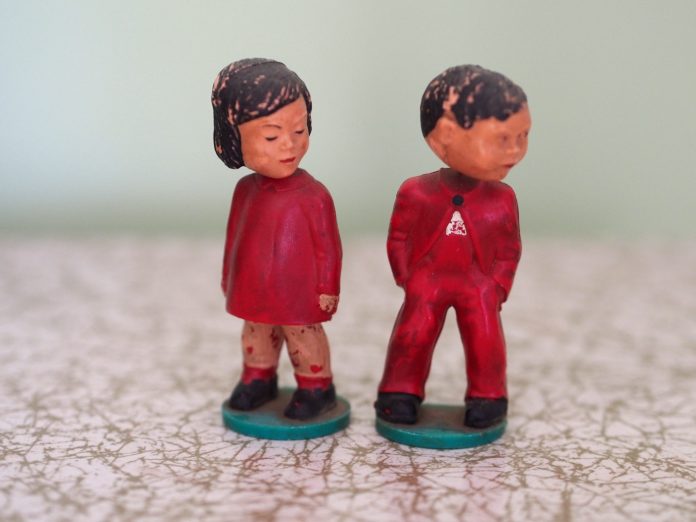Hi Shaun,
I’m wondering if you can tell me anything about these little dolls. They both came from a yard sale from a senior lady in Franktown in the early 80s.
The small bobblehead kids are about 3” tall and have marked on their base: “Magneto Patented, Made in Western-Germany.” The larger one is 6”, has natural hair and is hollow with felt and lace clothes. Her paint ran at some point.
Pearl Pirie

Hello Pearl,
Thank you for sending along the interesting photos of these little items. As you likely know, antique and vintage toys are a hugely popular area of collecting. In fact it is one of the few areas of collecting that has successfully resisted, at least to some degree, the drop in valuation caused by the turbulent economic times of the last several years.
As in other categories, antique and vintage toys have several categories including cast iron, tin plate, wind up, pull toys, friction and battery operated toys – to name only a few. Toy collectors take their pastime very seriously and rare toys continue to fetch impressive prices at auction and specialty shows.
Similar to most antiques, the condition of the toy is absolutely critical to collectors. Naturally, toys were meant to be used and played with over time. Not surprisingly then, the vast majority of toys have suffered from too much use over the years and their condition shows it.
To find a rare toy or even a fairly common one in excellent condition can be difficult. It’s a thrill for collectors to find one and it is topped only by finding a toy in its original box. In fact, the term “mint in the box” is a specific term used to classify and describe the quality of a particular toy. It means exactly what it says: the toy is in mint, seemingly unused condition, and comes in the original box.
Germany has a long history of toy manufacturing and the products of companies like Bing, Hilpert, Marklin, Schuco and Fleishman are highly sought after by collectors worldwide. The toys you’ve photographed come at a later date, likely the early to mid 1950’s. The pair of smaller ones are known as “bobbleheads” or “nodders” and, as you point out, were manufactured in Germany as is marked on the underside. Bobbleheads or nodders typically have heads that are attached to the body of the toy with a wire. Any movement of the figure causes the head to nod or bobble. Some, like yours, had small magnets embedded in them as well, so when the two figures are brought together the magnetic force causes them to join or “kiss.” I think the paint was applied directly to the surface of the toys, possibly by hand. Not surprisingly some of the paint has flaked or worn off over time.
Little toys like these were inexpensive and produced as giveaways for use at fairs or exhibitions. Yours appear to be in quite nice condition. I would think they would be worth about $25 if you had to replace them with a pair purchased at an antique store.
You’ve indicated there are no markings at all on the larger toy. Like the pair of small ones, I think this is also a mass-produced item from the early to mid 1950’s and, again, was probably a giveaway item. The condition of this one has suffered somewhat which isn’t surprising given that these toys were made very inexpensively.
Your toys bring back memories of a time not too long ago, an era of innocence when the baby boomer generation was well underway. Thank you for sending your photos.
Shaun
Shaun Markey is a resident of Westboro and author of a memoir called Folk Art in the Attic. He also blogs about antiques and folk art at folkartintheattic.blogspot.ca. If you have an antique or collectable and are curious about its past and approximate value, email a photo to shaunmarkey@rogers.com. Please make sure it’s high enough resolution so that details are visible! Any extra information you can share about your treasure is helpful too. Your item – and its story – might just be published in the next column.
